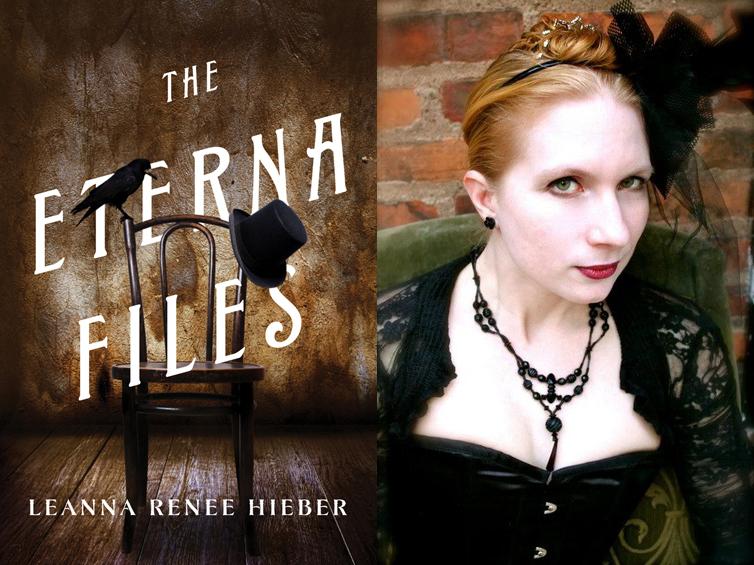Mediator Ayala Storme kills demons by night and handles PR by day. She avoids Mediator luncheons and a fellow Mediator who’s been trying to get in her pants for years. She does her job. She keeps her sword clean and her body count high. But when a rash of disappearances leads her to discover that Nashville’s hellkin are spawning a new race of monster on human hosts, Ayala will be the first line of defense against these day-walking killers. That is, until one of them saves her life. Dodging the Mediators and the demons alike, Ayala’s new knowledge of the hybrids’ free will challenges everything she’s ever known about her job. Racing the clock and trying to outrun her comrades and enemies alike, she’s not sure who will catch her first…
* * *
Lesson the First: It’s Okay to Play God
When I first started writing, I was a die-hard pantser. I wrote two and a half books you will never ever ever see, and I did it resting in the soaring butt-ress of my trouser bottoms. (#butts)
Some people can keep on that way and their work flows and molds itself into the elegant forms of a glass sculpture that started out a vase and turned into this platter of perfection.
Hahaha, not me.
Those first 2.5 books started out like books and grew into Cthulu-esque page monsters with plots dangling from every orifice. I tried to query one of them. I’ll sit here and eat popcorn while you imagine how that went.
Yep.
When I went back to STORM after a long hiatus, the central feature of the book had to go. I’d learned that from a blunt literary agent at a conference who wasn’t even talking about that book. For the first time, I looked at my book and told it that it needed to be what I wanted it to be instead of what it’d slimed all over the page — and lo and behold, the dangling plots retracted, the drips of ink coagulated into words, and when I was done I had the strongest book I’d written at that point.
Through that, I learned that I could be god in my fictional worlds. (Maybe in this one too. YOU’RE NOT MY MOM.)
Lesson the Second: You’re the Only One on the Racetrack
I’ve got a lot of really successful friends.
(Hi, Chuck.)
Like…even present host-face excluded? I have a self-published author friend whose books are perpetually at least eight out of the top twenty books in her category on Amazon. She just owns that list. Always. She just hangs out there and kicks her feet back and watches editors not buy urban fantasy knowing her readers are just slavering for her next book.
I know a lot of authors who are just…everywhere. Doin’ their thing and doing it WELL.
On release day, STORM cracked the 10,000th rank on Amazon, and I cried because I was so excited and happy and overwhelmed. My trad published book didn’t do that when it came out last year, even though I’d put together a 40 stop blog tour and basically was wearing my rib cage as a hat by the end of it.
I had this…moment after I shared a screencap of my book at #9388 on Amazon’s paid Best Seller rank where I thought, “There are 9387 people ahead of me. Most of my friends’ books LAUGH at numbers like this as they go speeding by. I look like a fool.”
But then I took a deep breath and looked back to December where over 80 people, some friends and some strangers, literally saved me from losing my car and probably my home. Those names are listed in the back of STORM. All 80 of those people got an ARC of Storm and almost half of them bought the book anyway.
You’re the only one on the track, and the only bunny you’re chasing is the one you put there for yourself. That’s the only one that matters. You chase that bunny, keep your eyes on it, and never forget that for the people who seem to be ahead of you, there’s someone who seems to be ahead of them. We’re all chasing our own bunnies, and art is not a zero sum game.
Lesson the Third: It’s Okay to Walk Away
STORM was offered a publishing deal.
It was with a small press that had a stellar reputation. They told me and my agent that it’d be published in print and ebook, and we felt great about it. But then the terms changed very suddenly, and we decided to back out.
Had I not had a conversation with an author friend at Capclave the week before about just that, I don’t know that I would have had it in me to walk away, even though it was the right thing to do for my book.
What he told me, sitting on a couch on the last day of a long, grueling weekend where he’d had some serious ups and downs, was that it’s okay to walk away. That they should want you as much as they want them. So often in publishing we turn to the relationship metaphors, but it’s really true. If you want the sweet romantic footrubs and tuna melts in bed with The Bachelor blasting on the TV but their idea of romance is a mud pie and a beatific smile? The metaphor kind of fits. Ain’t nobody got time for that.
It’s okay to walk away if you don’t think someone will be good to you. It’s also okay to walk away if they’re just not right for you.
Lesson the Fourth: Sometimes You Need a Bunny
Those bunnies. They just keep GOING. And going and going like tired 90s references.
STORM gave me something to chase again. I took a beating in 2014, and not just because of the aforementioned shenanigans. The decision to put STORM out on my own rejuvenated me in a lot of ways. It was a terrifying decision for me, not unlike sticking a hand into a dark hole on the side of the tree. (PS: I know what’s in those. Spiders. Spiders are what’s in those.)
I learned a lot of things I didn’t know I was capable of doing. Thank the Scrivener gods for having useful tools, because without them I would have been holding that bunny between two shaking hands and snotting all over it.
For the last three months of 2014, I felt like the biggest failure in this galaxy. I was stalled on my new manuscript. Broke and about to lose my car and the single room I rent. Going through a divorce. Dealing with [redacted because reasons, gah] and generally feeling like no matter what I did, it would never be enough.
For eight years now, I’ve worked 80-130 hours a week (I actually clocked a 130+ hour week just two weeks ago) because I want writing to be my career…but I also like eating, and so do my cats. I came to a broken, broken place in December, yo. Things were not good.
STORM became my bunny. It became my way of fighting back, of chasing this thing I’ve been chasing for so long (far, far longer than these last eight years).
And funny story? On STORM’s release day, SFWA announced they’re gonna start letting self-published and small press published authors join their club. While not strictly relevant to me at the moment, it felt like a nice indication that doing my thing could dovetail with the other dreams that still stick in my head.
Lesson the Fifth: Sometimes the Goal is Just Past the Tape
A few years ago, if you’d asked me what my writing goals were, I would probably have told you sort of pompously like a jackass that “BOOK ON SHELF BECAUSE SHELF.”
I wanted to see my books on a shelf. I think to me the shelf was always a metaphor, but I was totes McGotes missing the point.
The shelf was never really the goal — and when I had this epiphany about eleven days ago, I wanted to put myself on a shelf without any dinner.
The shelf had been the tape for me at the finish line. This thing by which I would measure success. Each book I’d written from book 1-3 I’d thought it would be The One. Until the epiphany.
Which was this:
Readers are the goal. The shelf might be a way to get the book to them, but the shelf is not the ultimate goal. Because if a book’s on a shelf, it’s not open in anyone’s hands. (This also goes for digital shelves.) The readers are the real goal, and to get to them, there usually isn’t just ONE book. Few people write a single book, snag a hefty book deal, and waddle off to the bank to a chorus of adoring, angelic fans pelting them with rose petals and whisky.
There’s not a THE One. But there are many. There’s the one that you first finish. There’s the one that’ll get you an agent, if that’s what you want. There’s the one that’ll get you a publishing deal. There’s the one that will bring you your first tweet that happened at 4:30 AM, where you wake up to see it and someone’s yelling at you for keeping them up all night because your book was SO DAMN GOOD. There’s the one that will bring your first email from a reader telling you that your book moved them. Changed them. Saved them. There’s the one that breaks 10,000 on Amazon’s rankings for the first time. Or the one that, while you’re signing them in line, someone breaks down in tears and tells you that they wouldn’t be here without those words you wrote.
There’s the one you’ll write and go back and read and feel real pride at the world you built from nothing. There’s the one people will tattoo onto their skin. There’s the one that will make you a friend you never thought you’d meet. There’s the one that will break you to write, but heal others to read.
It’s probably not going to be just one book. There isn’t just ONE that will do all those things, most likely.
But writing just one story was never the bunny, was it?
* * *














